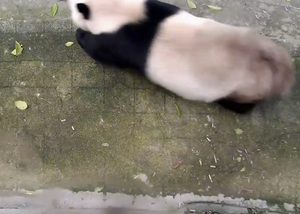
Chengdu, Sichuan, China
China Giant Panda Protection and Research Center with iPandacom
Latitude: ++30°39'N °
Longitude: ++104°04'E °
Sounds of Giant Pandas and environments at Chengdu and Wolong Mountain
The giant panda is a rare and beloved animal that only inhabits the six major mountain ranges in Sichuan, Shaanxi and Gansu provinces of China. With a population of less than 2000, the species is included on the endangered list by the Convention on International Trade in Endangered Species of Wild Fauna and Flora and is protected by China’s Wildlife Protective Law as the special-class protected animal. Giant pandas are appreciated and cherished by humans the world over; their familiar black and white faces and rounded ears endearing them to children and adults alike. Because of its prominent scientific research value, endangered status, and delightful viewing value, the giant panda is considered a national treasure of China. Though small in number, giant pandas have visited many countries and served as envoys of friendship from China to the world.
Chengdu has been the ancestral homeland to giant pandas since ancient times. Fossil records indicate pandas inhabited this area as recently as 4000 years ago. Chengdu’s location at the center of the corridor-like belt ranging from the Qinling Mountains in the north to the Minshan, Qionglai, Daxiangling, Xiaoxiangling. and Liangshan Mountain place it solidly in the native habitat of the giant panda. This area, located in the heart of one of 34 hot spots of biological diversity of the globe, is inhabited by 73 species of rare animals and over 2000 species of plants. Fifty giant pandas populate four reserves established in the giant panda habitat covering an area of 1500 km2 in Dujiangyan, Pengzhou, Chongzhou, and Dayi areas.The campaign for giant panda conservation began in earnest on January 17, 1953 when a wild panda was found in Yutang, a town near the city of Dujiangyan. He was rescued and relocated to Chengdu’s Futoushan Breeding Facility at the Chengdu Zoo, the precursor to the modern day Changdu Research Base of Giant Panda Breeding. This, marked the first giant panda rescue since the development of the People’s Republic of China. Chengdu deserves to be called “The Home of the Giant Panda” as it the metropolitan area nearest to the center of the panda’s natural habitat. Just 70 kilometers away from downtown Chengdu sits the heart of giant panda country. At elevations from 350m to 5600m above sea level, it is the only place with both wild and captive giant pandas in the world.'